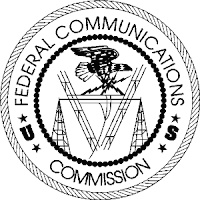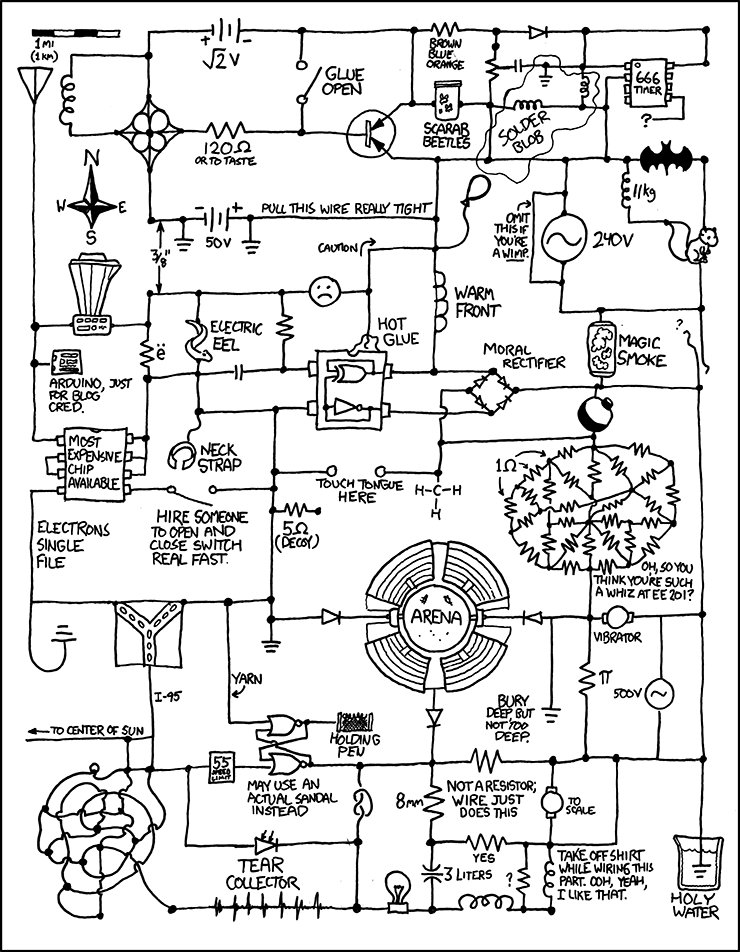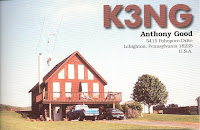Author Archive
 FCC Proposes 60 Meter Band Changes
FCC Proposes 60 Meter Band Changes
Today the FCC released a Notice of Proposed Rulemaking (NPRM) for changes to the 60 meter (5 MHz) band allocations in the US. These changes are based on a petition filled by ARRL. Currently amateurs in the US are allocated five channels in the band in which only upper sideband can be used with a maximum power of 50 watts. The channels are shared with government services and amateurs must not interfere with these primary licensees.
The proposed changes in a nutshell are:
The proposed changes in a nutshell are:
- Swap one channel with another frequency due to federal licensee digital traffic which often on this channel
- Increase the power limit from 50 watts PEP to 100 watts PEP
- Allow CW, PSK31, and PACTOR-III modes
I think the first two changes are reasonable. The one frequency often does have digital traffic on it making it unusable much of the time. Going from 50 watts to 100 watts is only 3 db and it shouldn't cause any issues for government stations if interference from 50 watt stations hasn't been a problem.
I do not think PACTOR-III should be allowed on these frequencies at all. Unattended PACTOR operation has been infamous for interfering with amateurs on other bands, especially 40 meters. We don't want to introduce this into a band that we have been walking on eggshells with, avoiding interference with government stations and hoping to get more frequencies and capabilities. I think CW and PSK operation makes sense as they could utilize this small amount of spectrum well, however with the current channel arrangement, there needs to be some clarification on just how these modes can be used. The current channels are specified by a center frequency and ARRL has provided "dial frequencies" for use in the 60 meter band that center up the SSB emissions on the channels. Both CW and PSK do not need the full 2.6 kHz or so bandwidth that a SSB signal occupies on the channels today. It would be terribly inefficient to allow just one CW or PSK signal on each channel. Could we allow multiple CW and PSK signals on one channel as long as the stayed within the 2.6 khz passband? This would make for more efficient use of the channels.
Overall I think this is a good proposal, the FCC just needs to nix PACTOR-III and put some common sense rules or guidelines around CW and PSK operation. The NPRM is open for comment 30 days after publication in the Federal Register.
 40 Meters Tonight: A Box of Chocolates
40 Meters Tonight: A Box of Chocolates
I'm on 40 meters doing some casual search and pounce this evening. Between the ARI DX Contest, the New England QSO Party, the Indiana QSO Party, and the 7th Call Area QSO Party, it's rather busy and you have to listen real close to be sure who's operating what contest. There seems to be some RTTY thing going on as well, but that goes without saying....
 Not To Toot My Own Horn…
Not To Toot My Own Horn…
....but I placed first for the third year in a row competing in the QRP division in the Pennsylvania QSO Party. It's the only contest I get excited about these days and it has reasonable hours that let you get some sleep between Saturday and Sunday operating. And it helps that I actually live in Pennsylvania.... :-)
 Darnnit!
Darnnit!
Lost another 2N2222 in the rig. Looks like I have to ride to Radio Shack this weekend for another five pack of them...
 Over-The-Air QSLing
Over-The-Air QSLing
A few days ago I received another one of those email requests to update one of my online QSL logbooks. I receive these periodically and they're somewhat annoying, though I should probably just delete my online logs. I've found online QSLing to be just more of a PITA than it's worth, especially Logbook of the World (LOTW). As I've mentioned in previous blog articles, I think LOTW is over-engineered. I know ARRL designed it the way they did in order to minimize forged QSLs, but it's still horribly easily to forge paper cards or game the QSL manager system to get cards for QSOs that never occurred. Perhaps some folks who chase awards need to wrap some sort of security or authentication around the whole QSLing process in an attempt to give it more prestige or relevance, but to me it's rather pointless in the grand scheme of things.
I love the KISS approach VA7VV has created, where you can just go to his site and print out a QSL card. I intend to take a similar approach soon, though not as "self-serve" as VA7VV has done, but migrating to a PDF format where I'll just email a QSL card to anyone who requests one.
But I was thinking the other day, why not just do over-the-air QSLing? With public/private key encryption it's easy to take some text or data and create a key that can be used to authenticate the information back to the originator. There could be a program or website to generate keys on the fly. I'm wondering if a key could be shaved down to maybe 10 alphanumeric characters that could be exchanged over the air like: "Here ya go Bob, here's yer QSL key: Gulf Delta Charlie One Foxtrot Zed Five Nine Yankee Three.... Good DX and 73!" You record that in your log and if someone wants to authenticate it back to the station, they can grab his public key off of the 'zed or at ARRL and plug it into the program or a website. I'm not sure how many bits the encryption would have to be decreased to to make the QSL key exchanged over the air short enough or make the encryption a reasonable enough level to prevent most forgeries.
Ah....maybe it's more trouble than it's worth and I should stick with emailing QSLs...
I love the KISS approach VA7VV has created, where you can just go to his site and print out a QSL card. I intend to take a similar approach soon, though not as "self-serve" as VA7VV has done, but migrating to a PDF format where I'll just email a QSL card to anyone who requests one.
But I was thinking the other day, why not just do over-the-air QSLing? With public/private key encryption it's easy to take some text or data and create a key that can be used to authenticate the information back to the originator. There could be a program or website to generate keys on the fly. I'm wondering if a key could be shaved down to maybe 10 alphanumeric characters that could be exchanged over the air like: "Here ya go Bob, here's yer QSL key: Gulf Delta Charlie One Foxtrot Zed Five Nine Yankee Three.... Good DX and 73!" You record that in your log and if someone wants to authenticate it back to the station, they can grab his public key off of the 'zed or at ARRL and plug it into the program or a website. I'm not sure how many bits the encryption would have to be decreased to to make the QSL key exchanged over the air short enough or make the encryption a reasonable enough level to prevent most forgeries.
Ah....maybe it's more trouble than it's worth and I should stick with emailing QSLs...
 QRP Record Shattered
QRP Record Shattered
A QRP record was shattered this week when Bob Goblosovits, W9RJX, after making a contact on 40 meters with a homebrew QRP rig in a tunafish can using 1 watt into a dipole, exclaimed on the QRP-L reflector "QRP really works!". This was the 239th time Goblosovits made the claim on a reflector, beating out Algernon Smith, WB2ACH, who previously held the record at 238 reflector messages in his ham career. Smith unfortunately passed away last year after succumbing to a heart attack at his workbench while soldering a surface mount kit rig.
It's expected that Goblosovits will be nominated and inducted into the QRP Hall of Fame this year at Dayton.
It's expected that Goblosovits will be nominated and inducted into the QRP Hall of Fame this year at Dayton.















